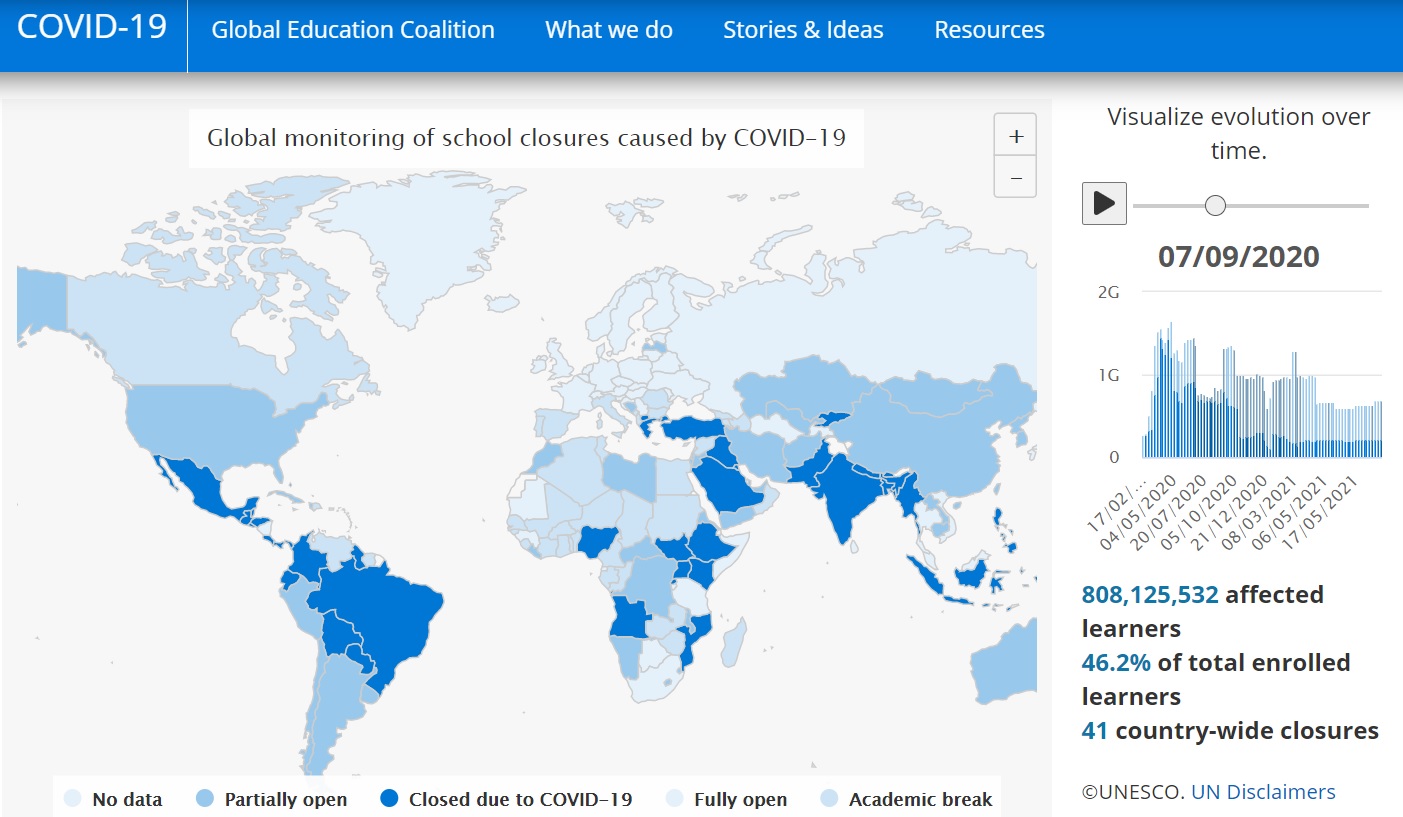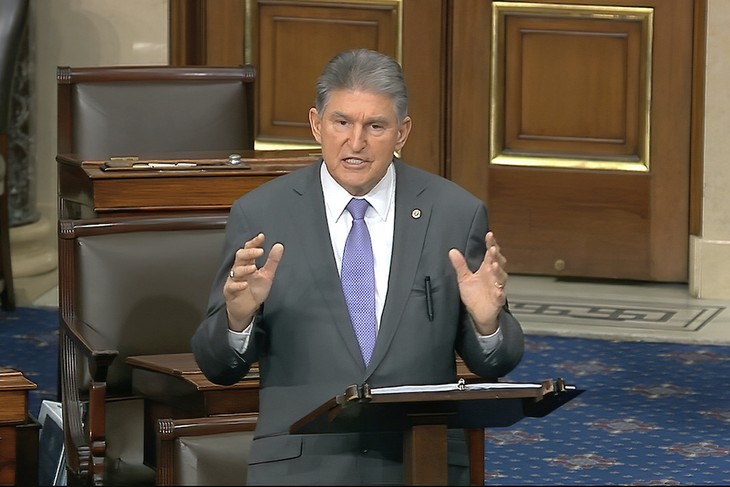Few events have accelerated Western institutional decay as the coronavirus pandemic, and it's been Dr. Anthony Fauci's foot on the gas.
Few events have accelerated Western institutional decay as the coronavirus pandemic, and it’s been Dr. Anthony Fauci’s foot on the gas.
As the pandemic sunsets on the United States, the nation stands far weaker, rocked by a public health emergency driving up debt and division amid a polarizing presidential election while political elites capitalized on the virus for ulterior ends. Legacy media got more irresponsible, big tech got more unfair, and half the population comfortably shut down their neighbors’ livelihoods in seeking an impossible life with zero risk, as if the virus had the potential to wipe out the human race.
At the center of this crisis stood National Institute of Allergy and Infectious Diseases (NIAID) director Fauci, who became a prominent voice in the first days of the pandemic while serving in the Trump White House. Standing at the press lectern each day to appear on evening television, Fauci took on the appearance of the trusted hometown physician.
At 79 years old and five feet seven inches with grey hair and glasses, Fauci’s voice became a familiar sound imbued with decades of experience and credibility. His early eagerness to contradict a president with his own love for the camera also made Fauci an attractive figure to a hostile press excited at the opportunity to make him “America’s Doctor.”
Americans don’t trust their institutions like they used to, and one can hardly blame them after the prior 15 months. Their leaders failed them time and time again when the stakes were high.
According to a poll conducted in February and March by the Robert Wood Johnson Foundation and the Harvard T.H. Chan School of Public Health that came out earlier this month, just more than half of Americans, 52 percent, said they placed a “great deal” of trust in the Centers for Disease Control (CDC). Far less than half, 37 percent, said they held the same faith in Fauci’s umbrella organization, the National Institutes of Health.
Trust in the media fares worse. Less than half of Americans, 46 percent, said they trust traditional media, according to Edelman’s annual trust barometer reporting a new low, while raising Fauci as their COVID champion.
Flip-Flop Fauci Prescribes Experimental Lockdowns
Among the most visible episodes to deteriorate institutional faith were public health officials’ excusal of protests against police while banishing religious gatherings throughout the summer. Fauci participated, claiming he couldn’t condemn the mass demonstrations but demanded what now would have been year-long stay-home orders.
“I don’t understand why that’s not happening,” Fauci said on CNN of several states that refused to pursue statewide lockdowns in early April last year. “If you look at what’s going on in this country, I just don’t understand why we’re not doing that. We really should be.”
In Fauci’s world, 14 days to slow the spread was never 14 days. Thirty days to slow the spread was never 30 days, and a year-long wait for a vaccine was never merely a wait, because months after full vaccination, Fauci clung to not one, but two of the face masks he once decried as unnecessary then later conceded was all for show in another of his infamous 360s.
“If you look at the masks that you buy in a drug store, the leakage around that doesn’t really do much to protect you,” Fauci told the USA Today editorial board in late February last year. “There is absolutely no reason whatsoever to wear a mask.”
Indeed, the CDC’s research on pandemic preparation did not encourage the use of face masks, for similar reasons.
“There’s no reason to be walking around with a mask,” Fauci told CBS’ “60 Minutes” just weeks later.
By April, Fauci was telling Americans to wear a mask.
By January, Fauci said to wear two masks. It’s “common sense.”
By March, a fully vaccinated Fauci wearing two masks said that, despite immunity status, people should keep the masks.
By May, Fauci said to make the masks a permanent fixture of post-pandemic life.
By last week, as Americans began to move on from Fauci’s rules after delayed CDC guidance confirming vaccinated individuals may drop the mask, the doctor conceded it was all theater, theater that sowed deep doubt about vaccine effectiveness in the process.
“I didn’t want to look like I was giving mixed signals, but being a fully vaccinated person, the chances of my getting infected in an indoor setting is extremely low,” Fauci said on ABC’s “Good Morning America.” “That’s the reason why in indoor settings now I feel comfortable about not wearing a mask because I’m fully vaccinated.”
Fauci lied about herd immunity too, first placing the number at 60 to 70 percent vaccination. Later, he upped the number to “70, 75 percent,” before it went up again to “75, 80, 85 percent.” Fauci admitted in December he was lying about required levels of vaccination to hit herd immunity because he kept reading about Americans hesitant to accept the vaccine.
“When polls said about half of all Americans would take a vaccine… I thought, ‘I can nudge this up a bit,'” Fauci told the Times. In other words, it was time to make threats so Americans would do what they were told. Even then, the masks stayed on for quite some time.
An Unelected Political Animal with Massive Power
The face of the face mask, Fauci was also and more importantly the face of the lockdowns. Democrat politicians took Fauci’s word as gospel on the pandemic, embracing harsh restrictions to devastating results.
The four states with the highest rate of COVID fatalities are all in the northeast. Fauci — described as a “political animal” by former Trump White House coronavirus adviser Dr. Scott Atlas — praised those same states for following his guidance despite their deadly performance.
“We know that when you do it properly, you bring down those cases. We have done it. We have done it in New York,” Fauci told PBS in July, touting Democrat Gov. Andrew Cuomo for the next six months before legacy media finally picked up on the governor’s nursing home scandal, the severity of which Cuomo covered up and which even provoked an impeachment inquiry. At the time of Fauci’s praise, New York led the nation in COVID deaths by nearly double the closest state, with more than 32,000 dead.
Meanwhile, no dissent to Faucian prescriptions was to be considered — not by Fauci, and not by the corporate media who loved him. Speaking out might cost researchers who depend on federal grant money their funding.
In October, a trio of elite academics from Harvard, Oxford, and Stanford universities unveiled The Great Barrington Declaration to promote an alternative pandemic strategy to the experimental lockdowns Fauci pushed ceaselessly. The document proposed a strategy of “focused protection,” or of lifting social restrictions on the general population while implementing targeted measures to protect the most vulnerable.
The three signers wrote they were compelled to propose the declaration after observing the severe consequences of lockdown measures. The lockdowns, they observed, presented costs that far outweighed the benefits, including lower childhood vaccination rates, worsening cardiovascular disease outcomes, fewer cancer screenings, and deteriorating mental health. The absence of kids in schools, they noted, was “a grave injustice,” yet endorsed by Fauci.
Within two days the document drew more than 3,500 signatures including an impressive array of scientists whose voices had been ignored or dismissed. By May 2021, the declaration featured signatures from more than 50,000 doctors, epidemiologists, and scientists, along with nearly 800,000 lay people.
Yet Fauci shot the Great Barrington Declaration down, running to the friendly press to dispel criticism of his pandemic prescriptions, any concession from which offered Fauci nothing to gain and everything to lose.
“Quite frankly, that is nonsense,” Fauci said of the document’s proposal, calling his peers in the scientific community stupid for their disagreement. “Anybody who knows anything about epidemiology will tell you that that is nonsense and very dangerous.”
Dr. Jay Bhattacharya, an epidemiologist and infectious disease expert at Stanford, was one of the document’s principal authors Fauci declared ignorant.
“Fauci propagandized against a reasonable alternative strategy,” Bhattacharya told The Federalist, “which absolutely shocked me.”
Speaking over the phone, Bhattacharya explained that his former admiration for the now-80-year-old doctor, whose textbook on internal medicine even sits on Bhattacharya’s shelf, has deteriorated with abject politicization.
“He has acted in ways that make him appear very political and has contributed substantially to the decline in trust among the American public,” Bhattacharya said, “At the beginning of the epidemic and decades before that, I had nothing but respect for him.”
A Tragedy For Students
On schools, Bhattacharya said, Fauci’s influence has been particularly devastating.
As outlined by journalist Jordan Schachtel, Fauci first called for schools to shut down, then said closures should depend on community spread, then said schools should shift to primarily online learning, then reverted to the idea of opening if local transmission was low, then back to primarily online, and then said he always backed open schools.
Fauci was among the first to urge schools to shut down and transition to remote learning despite the science suggesting early on that COVID presented virtually no risk to children. In April, Fauci raised hysteria over Florida Republican Gov. Ron DeSantis preparing to re-open schools, alleging kids would get infected and potentially die. The fall, Fauci said, was when schools could re-open again.
Four months later, Fauci said people should “think twice” before allowing kids back in the classroom, despite an entire summer of evidence overseas showing it safe, and even vital to return children to school given the minimal risk for community transmission. By September, the United States stood out as one of the only developed nations in the world with shut-down schools, in stark contrast to nearly every country in western Europe fully open.

Some U.S. students wouldn’t see the classroom for another seven months and, according to a tracker by the American Enterprise Institute, some districts still remain entirely remote while only 53 percent of districts nationwide were fully in-person by the end of the 2020-21 school year.
Fauci’s evolution on school closings over the pandemic has illustrated his remarkable high-stakes inconsistency so detrimental to public faith in institutional leaders. Throughout the entire saga, Fauci often took the sideof teacher unions in their quest to guarantee more government funding without a pledge to keep schools open, landing upwards of $100 billion in deficit spending from Congress in the process.
Unions’ exorbitant influence on the CDC further eroded the credibility of the nation’s formerly pre-eminent authority on public health. Billions of the teacher union prize money, meanwhile, won’t be spent for years, and students whose education was held hostage for the money are already being described as the “lost generation.”
A Pandemic Coming Full Circle
As the pandemic comes to a close, Fauci has been more sensitive to criticism of his performance steering the federal response. When asked in mid-March last year whether he would support a 14-day national lockdown, Fauci said he would prefer an overresponse and the criticism to come with it.
“I would prefer as much as we possibly could,” Fauci said on NBC’s “Meet the Press.” “I think we should really be overly aggressive and get criticized for overreacting.”
With the arrival of three broadly available vaccines 15 months later and a pandemic in recession, the story has shifted from viral mitigation efforts to investigating the origin of the virus, origins Fauci has been peculiarly hesitant to seriously pursue. His reasons for this have become clear with new revelations about Fauci’s potential role in that question.
While corporate outlets initially smeared the idea that COVID-19 emerged from a Chinese lab in Wuhan, the site of the first outbreak worldwide, new reporting from the Wall Street Journal this week has given life to the theory among those who consistently dismissed it, including Fauci.
Based on previously undisclosed U.S. intelligence, the Wall Street Journal reported three researchers at the Wuhan Institute of Virology (WIV) were hospitalized with COVID-like symptoms in November 2019 preceding the outbreak in the Hubei Province. The lab, known for its relaxed safety protocols, had been reportedly collaborating with the Chinese military, according to the Trump State Department, facts not disputed by officials in the Biden administration.
Part of the lab’s work focused on “gain of function” research, a method of pandemic preparedness for which scientists extract viruses from the wild and engineer them to infect humans to study potential therapeutics, including vaccines. The research is so dangerous that it’s been banned in the United States since 2014, but was being conducted on bat coronaviruses at the Wuhan lab.
The lab operated with funding from Fauci’s National Institutes of Health (NIH). Fauci admitted this before he denied it in front of Senate lawmakers, all within the same line of questioning.
“Gain of function research, as you know, is juicing up naturally occurring animal viruses to infect humans. To arrive at the truth, the U.S. government should admit that the Wuhan Virology Institute was experimenting to enhance the coronavirus’s ability to infect humans,” Kentucky Republican Sen. Rand Paul pressed during a Senate Committee on Health, Education, Labor, and Pensions hearing earlier this month.
Yet Fauci denied that COVID-19’s origin as a potential product of gain of function research was funded with U.S. tax dollars.
“With all due respect, you are entirely, entirely, and completely incorrect,” Fauci said. “The NIH has not ever and does not now fund gain of function research in the Wuhan Institute of Virology.”
According to longtime journalist and former New York Times science writer Nicholas Wade, however, grant money from Fauci’s NIAID was being funneled through EcoHealth Alliance run by Dr. Peter Daszak to conduct the research banned in the United States.
“From June 2014 to May 2019 EcoHealth Alliance had a grant from NIAID, part of the National Institutes of Health, to do gain-of-function research with coronaviruses at the Wuhan Institute of Virology,” Wade reported in a Medium post.
Wade wrote Fauci’s denial to Paul was “surprising” given the evidence of experiments “with enhancing coronaviruses and the language of the moratorium statute defining gain-of-function as ‘any research that improves the ability of a pathogen to cause disease.'”
Fauci conceded before House lawmakers Tuesday the NIH had earmarked $600,000 over five years to study which bat coronavirus could infect humans, but has continued to deny it was gain-of-function research. For that, he has a clear motive. Wade wrote Fauci’s denial may be a technical one to evade the connection between NIH funding of the Wuhan lab and its possible birth of the novel coronavirus that developed into a global pandemic.
“Dr. Daszak’s EcoHealth Alliance, for one, believes that the term gain-of-function applies only to enhancements of viruses that infect humans, not to animal viruses,” Wade explained. “So gain-of-function research refers specifically to the manipulation of human viruses so as to be either more easily transmissible or to cause worse infection or be easier to spread.”
Fauci’s funding of the lab that good evidence suggests could have given rise to the virus has begun to finally stoke calls for his resignation from lawmakers.
The Face Of Institutional Decay
Fauci’s propulsion in the press is as much an indictment of the media as the doctor himself. His incentives as a public health official focused on the prevention of COVID transmission no matter the costs appeared to blind him to the effects of the policies he so adamantly, yet so inconsistently, demanded on the Sunday television circuit. Legacy outlets only propped up those whose ideas confirmed their pre-approved Faucian consensus.
As the face of the masks, the face of the lockdowns, and possibly even the face of the pandemic, Fauci also became the face of accelerating institutional decay, a political figure whose abject dismissal of alternative strategies amid high-stakes crises left a nation weaker and more divided than in decades. Worse, Fauci has become the face of lost time, lost opportunities, lost businesses, lost graduations, lost holidays, lost concerts, lost weddings, and lost futures for children.
Tristan Justice is the western correspondent for The Federalist. Follow him on Twitter at
@JusticeTristan or contact him at Tristan@thefederalist.com.






 The judge has postponed the ballot examination hearing until after the county dismissal motion is considered.
The judge has postponed the ballot examination hearing until after the county dismissal motion is considered.


